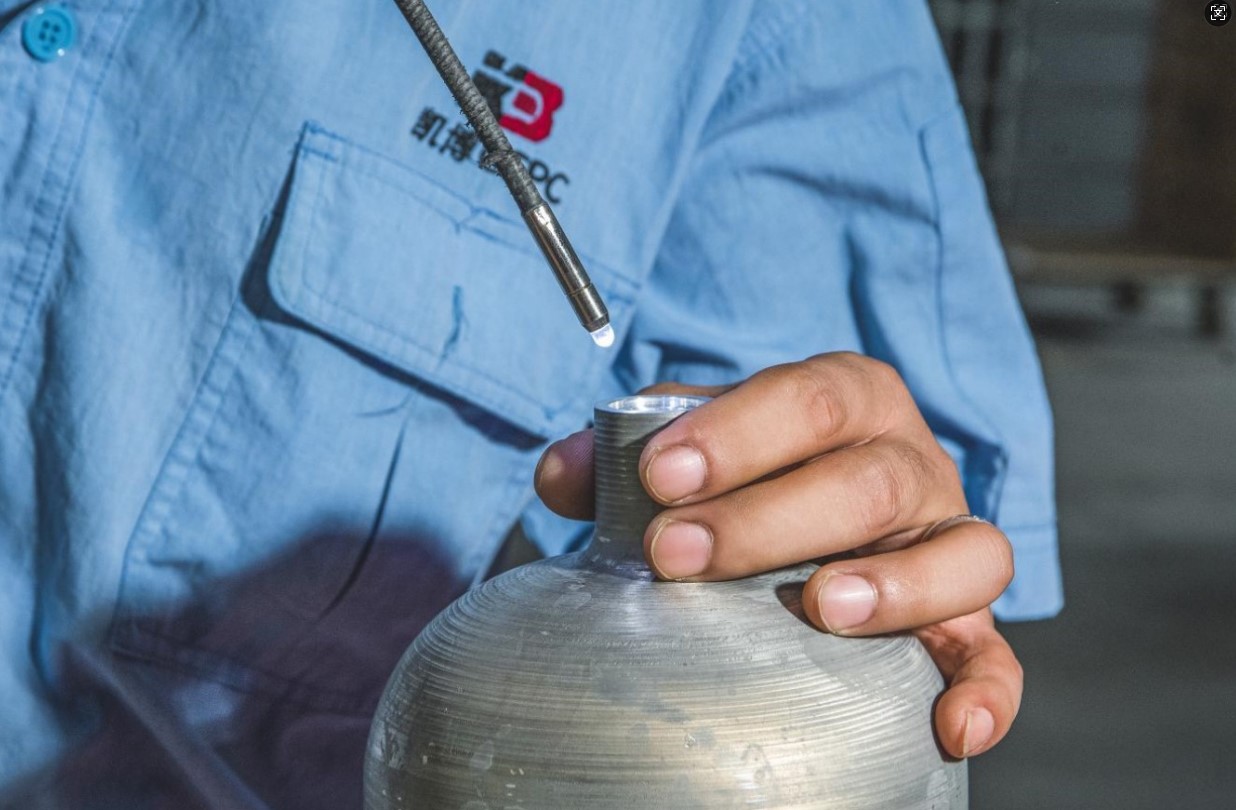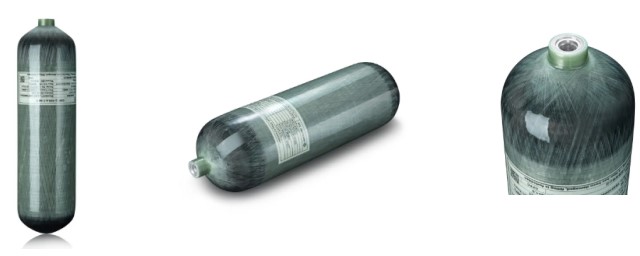Carbon fiber composite cylinders are becoming a key component in modern inflatable tools, such as rafts, boats, and other equipment that rely on high-pressure air or gas for inflation and operation. These cylinders are lightweight, strong, and durable, making them a popular choice for both recreational and professional use. This article will explain how carbon fiber composite cylinders work, why they are important, and how to choose the right one for your needs, focusing on their role in inflatable tools. The goal is to provide clear, practical information that anyone can understand and use.
How Carbon Fiber Composite Cylinders Work
Carbon fiber composite cylinders are designed to store and release high-pressure gas, such as air or nitrogen, which is used to inflate tools like rafts and boats. Unlike traditional cylinders made of steel or aluminum, these composites combine a metal lining (often aluminum or steel) with an outer layer of carbon fiber reinforced with other materials like fiberglass or resin. This combination creates a cylinder that is both strong and much lighter than its metal counterparts.
The process starts with a metal lining, which acts as the inner container to hold the gas. This lining is wrapped with layers of carbon fiber using a technique called filament winding. A machine winds the carbon fiber tightly around the metal lining, forming a thick, strong shell. The carbon fiber is then coated with a resin and cured in an oven, which hardens the material and bonds it firmly to the lining. This results in a cylinder that can withstand high pressure—up to 300 bar or more—while keeping the weight low.
For inflatable tools like rafts and boats, these cylinders provide the compressed air needed to quickly inflate the structure. When you open the valve, the high-pressure gas flows out, filling the inflatable chambers of the raft or boat. The carbon fiber’s strength ensures the cylinder doesn’t burst under pressure, while its light weight makes it easy to carry and use, especially in remote locations or on water.
The Importance of Carbon Fiber Composite Cylinders
Carbon fiber composite cylinders are important for several reasons, especially when it comes to inflatable tools like rafts and boats. First, their lightweight nature is a big advantage. Traditional steel or aluminum cylinders can be heavy, making them hard to transport or attach to inflatable equipment. Carbon fiber cylinders, however, can be up to 50% lighter than metal ones of the same size, which is crucial for portable inflatable tools that need to be carried or stored easily.
Second, they offer excellent strength and durability. The carbon fiber wrapping provides a high strength-to-weight ratio, meaning the cylinder can handle intense pressure without adding extra bulk. This is vital for safety, as inflatable rafts and boats rely on consistent pressure to stay functional. If a cylinder fails, the tool could deflate, putting users at risk. Carbon fiber’s resistance to corrosion also makes it ideal for marine environments, where saltwater and moisture can damage metal over time.
Third, these cylinders improve efficiency. Inflatable tools often require quick inflation, and carbon fiber cylinders can store more gas in a smaller, lighter package. This means faster setup times for rafts and boats, which is especially important in emergency situations, like rescue operations, or for recreational users who want to get on the water quickly.
Finally, carbon fiber composites are increasingly used in high-performance applications, including aerospace and new energy vehicles, showing their reliability. For inflatable tools, this translates to equipment that can handle tough conditions, from rough seas to long storage periods, without losing performance.
How to Choose the Right Carbon Fiber Composite Cylinder
Choosing the right carbon fiber composite cylinder for your inflatable tools involves several practical considerations. Here’s a step-by-step guide to help you make an informed decision:
1. Understand Your Needs
Start by thinking about how you’ll use the inflatable tool. For example, if you’re using a raft for occasional fishing trips on calm lakes, a smaller, less expensive cylinder might suffice. But if you’re a professional rescue team or plan to use a boat in rough ocean conditions, you’ll need a cylinder with higher pressure capacity and greater durability. Consider the size of the inflatable (e.g., a 10-foot raft vs. a 20-foot boat) and how often you’ll need to inflate it.
2. Check the Pressure Rating
Carbon fiber cylinders come in different pressure ratings, typically ranging from 200 to 300 bar. Higher pressure means more gas can be stored, which is good for larger or frequently used inflatables. Make sure the cylinder’s rating matches or exceeds the requirements of your raft or boat. Check the manufacturer’s guidelines to ensure compatibility.
3. Look at Weight and Size
Since portability is a key benefit, choose a cylinder that balances weight and capacity. A lighter cylinder is easier to carry, but it shouldn’t sacrifice too much gas storage. For example, a cylinder with a 6.8-liter capacity and 300 bar pressure might weigh only a third of what a steel cylinder of the same size would, making it ideal for inflatable tools.
4. Assess Material Quality
Not all carbon fiber cylinders are the same. Look for ones made with high-quality carbon fiber, like T700, and a reliable metal lining, such as 6061 aluminum alloy. The outer composite layer should be thick enough (e.g., 10mm) to handle pressure but not so heavy that it defeats the purpose of using carbon fiber. Also, ensure the cylinder has UV protection and corrosion resistance, especially if it will be used in marine environments.
5. Consider Safety Features
Safety is critical when dealing with high-pressure gas. Choose cylinders that meet industry standards, such as those certified for use in medical, fire protection, or aerospace applications. Look for features like burst discs or pressure relief valves that prevent over-pressurization. Check if the cylinder has been tested for fatigue resistance and has a long lifecycle (some can last up to 30 years with proper care).
6. Evaluate Cost and Maintenance
Carbon fiber composite cylinders are more expensive than traditional metal ones, with prices ranging from a few hundred to over a thousand dollars, depending on size and quality. However, their longevity and performance often justify the cost. Consider maintenance too—carbon fiber cylinders require less upkeep than metal ones because they resist corrosion, but you should still inspect them regularly for damage and store them properly to avoid UV exposure or physical wear.
7. Check Compatibility and Accessories
Ensure the cylinder fits your inflatable tool’s inflation system. Some cylinders come with valves or connectors that might need adapters for specific rafts or boats. Also, look at available accessories, like carrying cases or pressure gauges, to make your setup more convenient.
Practical Tips for Use
Once you have the right cylinder, use it wisely. Always follow the manufacturer’s instructions for inflation, storage, and maintenance. Avoid exposing the cylinder to extreme temperatures or direct sunlight for long periods, as this can degrade the carbon fiber. For inflatable rafts and boats, inflate slowly to avoid stressing the material, and check for leaks or damage before each use.
Conclusion
Carbon fiber composite cylinders are a game-changer for inflatable tools like rafts and boats, offering a blend of strength, lightness, and durability that traditional materials can’t match. They work by storing high-pressure gas in a lightweight, reinforced shell, making inflation quick and safe. Their importance lies in improved portability, efficiency, and reliability, especially in challenging environments. When choosing one, focus on your specific needs, pressure ratings, material quality, safety features, and cost. By selecting carefully and maintaining properly, you can ensure your inflatable tools perform at their best, whether you’re enjoying a day on the lake or responding to an emergency at sea.
This practical approach to carbon fiber composite cylinders ensures you get the most out of your inflatable equipment, balancing performance with safety and cost.
Post time: Feb-19-2025



